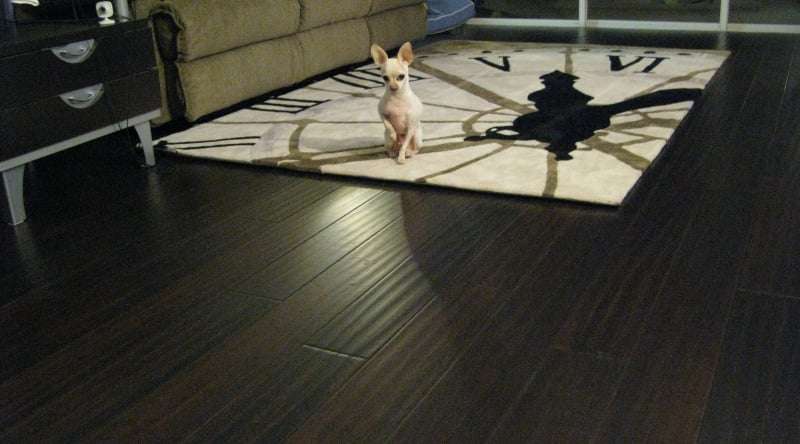 In recent years, more and more homeowners have switched to greener flooring options. Traditional floorings, such as carpet and vinyl, are now known to give off dangerous toxic gases within the home. Not only that, these flooring materials are harder to maintain, they encourage mold, dust, and bacteria, and they don’t last as long, causing them to end up in landfills more often than not.
In recent years, more and more homeowners have switched to greener flooring options. Traditional floorings, such as carpet and vinyl, are now known to give off dangerous toxic gases within the home. Not only that, these flooring materials are harder to maintain, they encourage mold, dust, and bacteria, and they don’t last as long, causing them to end up in landfills more often than not.
Because of these environmental and health hazards, new flooring options are flooding the market and providing safer materials made from renewable sources that last for years. Here are some sustainable floor choices for your sustainable home.
Concrete
It’s not just for the basement anymore. Concrete is a great green flooring option. It’s quite inexpensive, very easy to maintain, unbelievably durable, and really versatile. It can be stained practically any color, as well as scored and textured making it look like tile, brick, slate, or even granite. Concrete is also fantastic at offering thermal mass properties and can be used to maintain a consistent internal temperature in your home.
Tile
Ceramic tile is very beautiful and durable. While it does take quite a bit of energy to produce it, this is offset by the fact ceramic tiles last for years and years. They come in a wide variety of colors, textures, and sizes, and are super easy to maintain. Some tiles are now even made from 100% recycled glass, which not only makes them environmentally-friendly but also more durable and more resistant to stains and moisture. Ceramic tiles have thermal mass properties similar to those of concrete and can help stabilize the temperature in your home.
Linoleum
Often confused with vinyl, linoleum is actually made from renewable, natural raw materials such as linseed oil and pine rosin. It is a durable flooring option, easy to maintain, and comes in a vibrant color palette. Unlike vinyl, linoleum won’t release toxic chemicals, won’t melt, and it is hygienic, naturally anti-static, and resistant to dents and scuffing.
Cork
Cork is a natural product manufactured from the bark of the cork tree, and it is sustainably-harvested, meaning it can be harvested every nine years without harming the tree. The cellular structure of cork makes it impermeable, resilient, and a great option for thermal as well as sound insulation. It’s water-resistant, fire retardant, and comes in distinctive patterns and colors.
Wool
For those that love the warmth of carpeting but don’t want the harmful chemicals that come with it, you may want to consider wool carpets. Wool is very durable and naturally flame-resistant, and its natural moisture content reduces static electricity (no more nasty shocks in winter months). Wool is also non-allergenic and deters bacterial growth, which is quite common in ordinary carpeting.
Bamboo
If you love the look and feel of hardwood but don’t like the idea of cutting down trees that can take up to 30 years to regenerate, consider bamboo. It offers the same benefits as wood, although it is not wood, but a grass that can renew itself in as little as five years. This means you can have beautiful floors while helping sustain old-growth forests. Bamboo lasts a very long time and is harder and more durable than red oak – which is pretty darn hard. Oh, and it is also less expensive than hardwood, making it an excellent flooring option.
Click on the box below to receive free samples of Ambient’s incredibly durable and high-quality bamboo and eucalyptus flooring. If you have questions and would like to speak with one of our bamboo flooring professionals, please call 866-710-7070, today!

About the Author
James is your friendly neighborhood content writer here at the Green Living Blog. With a passion for all things sustainable, he’s your go-to guru for everything eco-friendly. Armed with a treasure trove of wisdom about sustainable living, recycling, and environmentally conscious practices, James is on a mission. He’s here to make sure you not only protect your family but also keep Mother Earth smiling. 😊🌎 When he’s not busy sharing eco-friendly insights, James can often be found teaching his cat that compost bins make the purr-fect hideaway. 🐱♻️ Join James on his quest to uncover the secrets of defeating wasteful habits while leaving the lightest footprint on our precious planet’s ecosystem.


